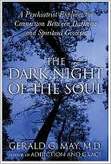
 This essay explores The Dark Night of the Soul: A Psychiatrist Explores the Connection Between Darkness and Spiritual Growth by Dr. Gerald May and describes how the book illuminates my own experience of spiritual darkness, the implications of spiritual direction for recovery from addiction, and the meaning of May’s statement (p. 179) that “God is nada, no-thing” for the director’s understanding of God. This essay, based on personal experience and previous exposure to the theology of St. John of the Cross will interact with May’s text and my theological tradition to address these areas.
2 Comments
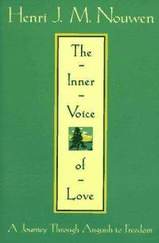 Losses are inevitable and are ever present in all lives. Grief is a normal response to loss whether the loss involves the loss of a job or a demotion, divorce, a house that burns down, a favorite car that is destroyed in a wreck, an “F” on a report card, a move, or any of the other losses each of us experiences as we live our lives. Grief is a normal reaction to any loss and is experienced holistically--physically, emotionally, socially, and spiritually. Henri Nouwen provides great insight into the spiritual dynamics of grief, loss, and coping with death in The Inner Voice of Love: A Journey Through Anguish to Freedom. For spiritual directors guiding grieving people and those experiencing various personal crises, Nouwen’s journal can be a great tool to open the directee to expressing what he or she is experiencing deep within one’s being. 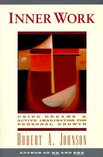 This post provides an easily accessible template to help directors and directees to apply the principles of dream work and active imagination as presented by Robert Johnson in Inner Work: Using Dreams and Active Imagination for Personal Growth. Johnson provides a four step process, based on Jungian psychology, with the goal of providing a method for “joining our conscious and unconscious selves, resulting in a central transformative experience that immeasurably enriches our lives” (back cover).  This post is keyed to Kevin Culligan's “Working with Darkness in Spiritual Direction” found in Presence: An International Journal of Spiritual Direction, September 2010, 44-52. Kevin Culligan provides the reader with a concise roadmap of the cartography of the spiritual journey as mapped out by St. John of the Cross. He focuses on two major works, The Ascent of Mount Carmel and The Dark Night of the Soul, both considered to be foundational resources for “understanding the phenomenon of darkness in the spiritual life” (44). Spiritual directors will find Culligan’s work helpful in assessing which stage of the spiritual journey their directees are currently experiencing and determining appropriate ways to assist them in moving forward. Additionally, it is always good to have an idea of where one is personally on the journey as well. The author’s opening lines are familiar to anyone who has worked in spiritual direction for a few years. Directees come to sessions voicing concerns about their inability to pray, the “dryness” of their spiritual lives, their seeming inability to understand the “darkness” of their journey, and wondering if something has gone horribly wrong. Culligan’s paper provides the director with tools to address these questions and provide hope and support for the directee during these painful periods. 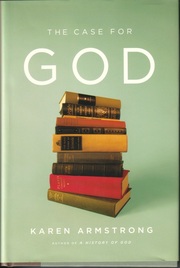 Biographical Sketch of the Author Karen Armstrong, a former Roman Catholic nun, has written more than 20 books on religious affairs—including A History of God, The Battle for God, Holy War, Islam, Buddha, The Great Transformation, and The Case for God—and two memoirs, Through the Narrow Gate and The Spiral Staircase. In these works, she explores faith in the context of the major world religions, focusing on how faith shapes world history and drives current events. In February 2008 she was awarded the TED Prize, ($100,000) given by a small nonprofit devoted to “ideas worth spreading.” She has been working on a “Charter for Compassion,” created online by the general public and crafted by leading religious thinkers in Judaism, Christianity, Islam, Hinduism, and Buddhism. The charter was signed in November 2009 by a thousand religious and secular leaders. She lives in London. 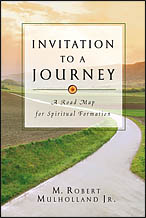 Biographical Sketch of the Author M. Robert Mulholland Jr. has been on the faculty (New Testament) at Asbury Theological Seminary since 1979. He holds an undergraduate degree from the U.S. Naval Academy, a M.Div. from Wesley Theological Seminary, and a Th.D. from the Harvard Divinity School. He is the author of several books on Scripture and spiritual formation. He is currently a consulting editor for The Journal of Spiritual Formation and Soul Care. Summary of Contents Mulholland developed this book from a retreat he gave to ordained and diaconal Methodist ministers. In Part I, Mulholland’s basic theme of “spiritual formation is a process of being conformed to the image of Christ for the sake of others” (12) is introduced with subsequent chapters devoted to a fuller development of each clause. The author proposes that his definition of spiritual formation will help the reader move successfully “against the grain” of cultural dynamics, which he believes “works against holistic spirituality” (13). Part II is a treatment of the interplay of modern temperament theory (Myers-Briggs) and spiritual formation. Mulholland shows that spirituality is not a “one size fits all” proposition and because “we are unique persons, and our relationship with God always manifests that individuality, our process of spiritual formation toward wholeness may be very different from others” (13). Part III addresses a number of well known spiritual “disciplines,” which the author develops in follow on chapters as either “classic disciplines” or “personal disciplines” and how these interact to move one along the journey. Mulholland concludes the work with a section on corporate and social spirituality, which he contends is “an aspect that is frequently missed in the faddishness of spiritual formation these days” (14). 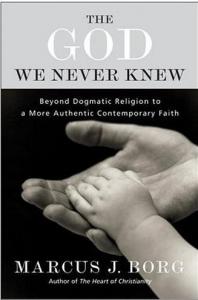 Biographical Sketch of the Author Marcus J. Borg is Canon Theologian at Trinity Episcopal Cathedral in Portland, Oregon. He is a fellow of the Jesus Seminar, holds a D.Phil degree from Oxford University and held the Hundere Distinguished Professor of Religion and Culture, an endowed chair, at Oregon State University, until his retirement. He is a columnist for Beliefnet and a contributor to several of the Living the Questions DVD series. He has been national chair of the Historical Jesus Section of the Society of Biblical Literature, co-chair of its International New Testament Program Committee and president of the Anglican Association of Biblical Scholars. As the author of nineteen books, Dr. Borg is among the most widely-known and influential scholars within the progressive wing of American Christianity. Summary of Contents The author presents his text in three main parts. The first section is highly autobiographical and provides the context of the author’s struggles with faith as a youth. Borg describes the concept of God he received in his religious tradition (Lutheran) and how this initial understanding of God failed to sustain him through his adolescence and early adulthood. He then shows how this concept has dramatically changed in the second half of the author’s life, an event which he describes as “meeting God again for the first time.” This experience is the basis for the title of the work and the author’s invitation to the reader to have that same experience. In the second section, Borg unpacks the central thesis of the text: “My central claim is very direct: our concept of God matters” (11) and explains how a person’s image of God influences their concept of spirituality and the sacred encounter. Borg argues that how a person images God will influence and color their entire concept of the divine, which will directly impact their spiritual development, either promoting or retarding the growth. The author concludes the book with challenges to modern American Christians in regard to seeking an authentic relationship with God through opening one’s heart to the already present God (panentheism), in regard to allowing God to speak correction to conventional socio-political agendas, and in regard to the very narrow understanding of “salvation” held by many Christians. Biographical Sketch of the Author Thomas Merton, O.C.S.O. (known as “Fr. Louis” in the Trappist monastery, Bardstown, KY) a popular and influential 20th century American, Roman Catholic author and mystical theologian, was born on 31 January 1915 in Prades, southern France. The young Merton attended schools in France, England, and the United States. He attended Columbia University in New York City (1935-38) and entered the Catholic Church in 1938 following a dramatic conversion experience. Merton entered the monastic community of the Abbey of Gethsemani on December 10, 1941. The abbot urged Merton to write his autobiography (The Seven Storey Mountain), published in 1948, which became a best-seller. In 1949, he was ordained to the priesthood and during the next 20 years, Merton wrote prolifically (more than 70 books) on the contemplative life, prayer, and religious biographies. These works often included controversial issues such as race relations, violence, nuclear war, and economic injustice. Merton was a leading figure in ecumenical relations following Vatican II and was one of the first Catholics to enter into serious dialog with eastern religions, including the Dalai Lama, D.T. Suzuki, and Thich Nhat Hanh. Merton died by accidental electrocution in Bangkok, Thailand, while attending an interfaith meeting of religious leaders on December 10, 1968.  Here we are in December and preparing for the holidays. It’s a magical time of the year, despite the crass commercialism that has hijacked the season. One of the important issues which gets lost in the mix is the role of dreams in shaping the contours of the Christmas story. As a spiritual director, I am constantly working with people to better understand their dreams and often that involves doing a considerable amount of teaching on the subject, as well as undoing some bad theology and psychology that most of us have picked up along the way. Let’s take a look at some old ideas that may be new thinking for many of us.  Have you ever given someone a gift and they used it recklessly, carelessly, or destructively? Can you remember when you gave a gift to someone who tossed it aside and didn’t even bother opening it? Can you think of a time when you gave a gift to someone and they didn’t thank you for it? How did that make you feel? Then there are other times that you gave gifts to someone and they were excited about opening it. Their eyes lit up when they took it out of the box, they said, “Thank you” and used it as you hoped they would. How did it make you feel? This is the way it is with God who has already given us a gift or gifts. Think of what might bring pleasure to His heart as He sees your use and appreciation for what he has given you. On the other hand, what would cause Him to feel hurt or disappointed? What if He saw that we just tossed our gifts aside unopened and unappreciated? |
AuthorSteve Stutz earned his doctorate in spiritual direction and formation at the Houston Graduate School of Theology, where he is currently Adjunct Professor of Spiritual Direction. He received his initial training in spiritual direction through the Formation in Direction program of the Episcopal Diocese of Texas in 2006. He is a retreat leader and workshop presenter, having worked with groups in the US, Canada, and Africa. He is trained to facilitate the Ignatian 19th Annotation, is an expert in dream work, discernment process, and the charismatic gifts of the Holy Spirit. Archives
October 2013
Categories
All
|
 RSS Feed
RSS Feed
